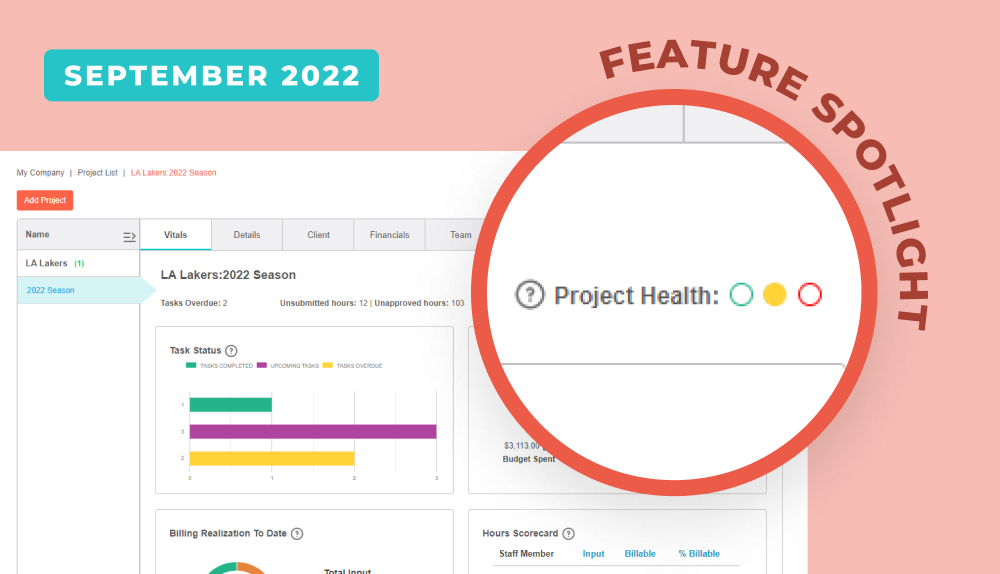Do you know what you did wrong in that last financial analysis?
Of course, mistakes do happen, but in times of crisis, avoiding them is even more important than before. For that reason, project cost management should become an integral part of your management — and here’s how to use the process to generate profits.
What is project cost management?
Project cost management includes planning, managing, and controlling the project budget from an initial estimate to a summary at the end of the project.
The point of cost management is very simple yet crucial for professional services companies: it ensures the project’s profitability at every stage of the project life cycle.
4 Stages Your Cost Management Process Needs to Have
Just like any other process that is supposed to cover the entire duration of the project, project cost management is also divided into a few stages. They were designed to help managers stay on top of the operation regardless of its changes over time.
These stages include:
- Resource planning
- Cost estimation
- Cost budgeting
- Cost control
Resource Planning
The resource planning process has a very simple objective: to divide the project into stages and tasks and to assign the right people to each one of them.
The process requires a work breakdown structure or a detailed project scope that acts as a base for allocations. However, both documents are prone to human mistakes or a scope crawl, causing delays and allocation problems. Here are a few examples of such issues — and some tips on how to avoid them.
Main Challenges of Resource Planning
Resource planning processes usually suffer from problems such as:
- Lack of historical data on similar projects that could help in realistically assessing the amount of work in each task or stage: We highly recommend acquiring projects your company has some experience completing; otherwise, your operation may be prone to scope crawl or being unprofitable.
- No knowledge of people’s availability throughout the project, resulting in overbooking or gaps in allocations. This usually ends with unavailable people being assigned to a project — and not being able to complete it.
- Creating a project plan based on the manager’s perception instead of consulting with other experts.
- Underestimating the amount of work needed to complete the project.
- Not including any delays or risks in the resource plan and creating unrealistic project schedules.

Cost Estimation
If you have already finished creating your resource plan and included some additional time for possible minor delays, you can now begin to estimate the costs of the entire project.
At this point, you should try to calculate the costs of work using real hourly rates or wages of the employees you assigned to the project in your resource plan. This is vital for the accuracy of our estimates, as choosing different specialists may affect both the costs and pace of work due to the availability of the resources.
Such a cost estimation must be done in a very precise manner, as it will act as a base for further comparison with the actual data collected throughout project cost management.
Main Challenges of Cost Estimation
Still, while cost estimation in project management might seem simple, there are a few crucial problems to avoid while conducting your process. These include:
- Using unrealistic data for your calculations: Don’t use average hourly rates, and don’t assume anything; work only on the real information from the resource plan to avoid making mistakes.
- Using an overly optimistic resource plan in your calculations: Once again, we urge you to leave some room in the project for unexpected events.
Cost Budgeting
Having prepared some accurate estimates, you can now go on to prepare a project budget.
Project budget = real costs of work + project overheads + a fraction of organizational overheads + costs of any risks (if applicable)
Your calculations should include:
- Costs of work calculated using the real hourly wages or salaries of employees assigned to a project. Do not use average rates here — they are not accurate enough to provide correct estimates.
- Project overheads, such as costs of equipment, software, or project-related travels.
- Organizational overheads the project will need to cover with its profits.
- Costs of any additional risk factors that your project may need to cover.
This budget will be used later in project cost management as a base for comparison with actual operation costs.
Main Challenges of Cost Budgeting
Major mistakes you can make while preparing a project budget include:
- Not including the price of overheads in your budget.
- Leaving no room for error or potential delays — remember, these things may happen unexpectedly, and they shouldn’t be disregarded.
- Not having information on the costs of overhead. If you don’t keep track of this data, you should start doing that; otherwise, you might be in for an unpleasant surprise when assessing your company’s financial performance.
Cost Control
Last but not least, you need to control the spending throughout the project to ensure that it won’t become unprofitable after some time. To do so, you can:
Use Project Financial Analysis
When the project is still in progress, you can use elements of project financial analysis to see whether its budget has been strained so far. The best way to do this is to calculate the cost performance index.
This indicator shows whether the number of hours spent on the project has exceeded expectations. This indicator can be later used to show the percentage of the budget that is left to be used.
Cost Performance Index: Example
Let’s assume that half of Project A is already done. It was supposed to take 1,600 hours. However, completing the work up to this point took 750 hours. Therefore, we have to multiply the progress (in this case, it is 0.5 because 1 represents a fully completed project) by 1,600 estimated hours and then divide the result by 750. In this case, the CPI is 1.07 — the project has used 7% more budget than it was supposed to.
Main Challenges of Cost Control
Just like any other part of project cost management, cost control also presents some issues you should avoid in your process. These include:
- Failing to enforce sufficient time tracking in your company. There won’t be any costs without tracked time, so convincing all the employees to fill in their timesheets is essential.
- Using incorrect or average wages for your calculations. We cannot stress this enough — any mistake here will affect all the calculations.!
- Spending too much time on the calculations. The manager’s time is precious and it should be saved whenever possible. Therefore, we highly recommend using specialized tools for such calculations — they are capable of automating the entire process!
Benefits of Project Cost Management
At this point, you may ask yourself: but what is it all for?
Project cost management has numerous benefits that should convince you to use this process daily. These advantages include:
- Preventing cost overrun and ensuring that your projects are as profitable as they can be.
- Helping you accurately calculate the price of a project.
- Avoiding risks and budgeting problems in the future.
- Helping managers find any financial problems with the project and solve them before they become more pressing matters.





